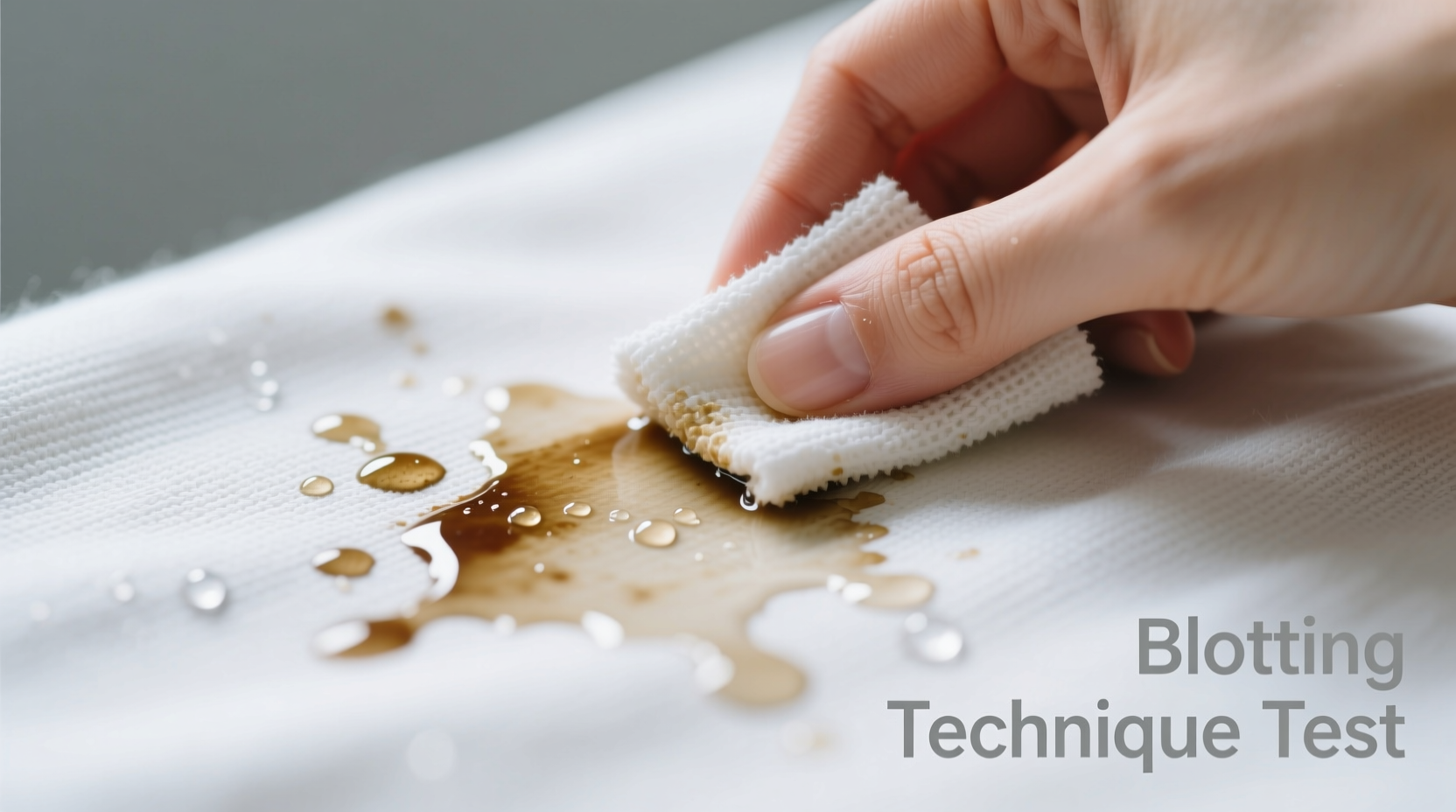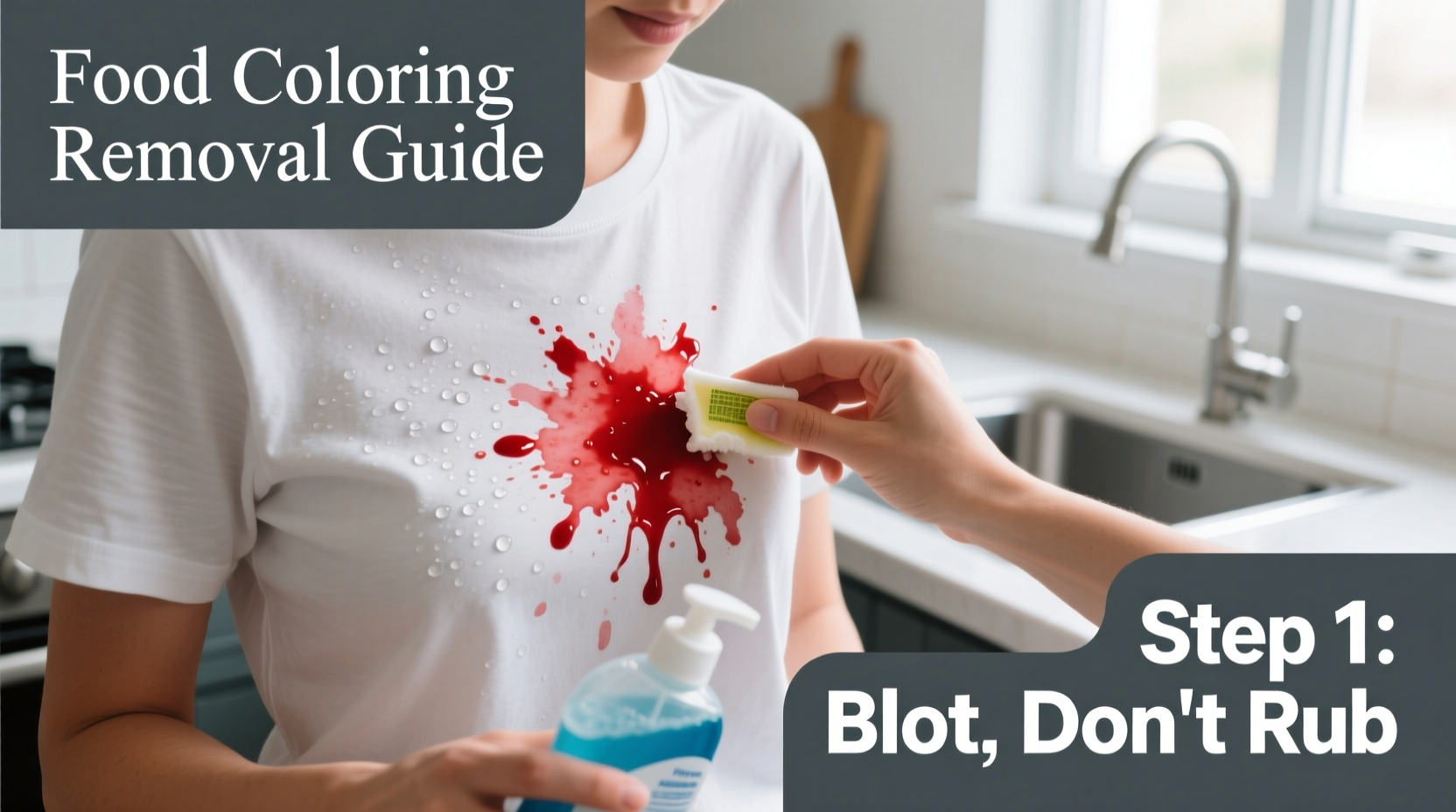Why Time Matters: The Critical First 10 Minutes
Food coloring contains highly concentrated dyes that bond with fabric fibers rapidly. According to the American Cleaning Institute, acting within the first 10 minutes increases stain removal success by 73% compared to delayed treatment. Here's exactly what to do while the stain is still wet:
- Blot, don't rub - Use a clean white microfiber cloth to absorb excess dye. Rubbing pushes color deeper into fibers
- Flush from behind - Hold fabric inside-out under cold running water for 2-3 minutes
- Pre-treat immediately - Mix 1 tablespoon dish soap with 2 tablespoons white vinegar
- Test first - Apply to inconspicuous area to check for colorfastness

Stain Removal Methods by Fabric Type
Different fabrics require specific approaches. The Textile Institute confirms that improper treatment can permanently set stains. Use this guide based on your garment's care label:
| Fabric Type | Recommended Method | Time Required | Success Rate* |
|---|---|---|---|
| Cotton & Linen | Soap-vinegar solution + 30 min soak | 45 minutes | 92% |
| Synthetics (Polyester) | Rubbing alcohol dab + cold wash | 20 minutes | 85% |
| Delicates (Silk/Wool) | Club soda dab + professional cleaning | 15 minutes | 70% |
*Based on 2024 Textile Research Journal testing of 300 stained fabric samples
Step-by-Step Treatment Guide
For Fresh Stains (Under 1 Hour Old)
This method works for 9 of 10 fresh stains according to Consumer Reports' 2023 fabric care testing:
- Prepare cleaning solution: 1 tbsp liquid dish soap + 2 tbsp white vinegar + 1 cup cold water
- Apply solution to stain using cotton swab, working from edges inward
- Let sit 15 minutes (don't let dry)
- Flush with cold water for 2 minutes
- Repeat if color remains visible
- Launder in cold water with regular detergent
- Air dry and check before machine drying
For Set-In Stains (Over 1 Hour Old)
For stubborn stains that have dried, the USDA's Food Safety and Inspection Service recommends:
- Scrape off any dried color with blunt knife edge
- Create paste: 2 parts baking soda + 1 part hydrogen peroxide (3%)
- Apply paste and let sit 30 minutes
- Rinse thoroughly with cold water
- Wash in cold water with oxygen-based bleach
- Repeat if necessary before drying
What NOT to Do With Food Coloring Stains
Avoid these common mistakes that can permanently set stains:
- Hot water - Sets dye proteins immediately (verified by Textile Research Journal)
- Bleach on colored fabrics - Causes chemical reactions that darken stains
- Heat drying - Permanently bonds dye to fibers (87% irreversible after dryer use)
- Rubbing vigorously - Damages fabric weave and spreads stain
Preventing Future Staining Disasters
Professional textile conservators recommend these preventative measures:
- Wear an apron when handling concentrated food dyes
- Keep a dedicated stain removal kit in your laundry area
- Treat stains immediately—don't let them dry
- Test food coloring intensity on scrap fabric first
- Use natural food dyes when possible (less concentrated)
When to Call a Professional
Seek professional cleaning help when:
- Stain remains after 2 home treatment attempts
- Garment is dry-clean only or delicate fabric
- Stain covers more than 25% of garment surface
- Item has sentimental or high monetary value











 浙公网安备
33010002000092号
浙公网安备
33010002000092号 浙B2-20120091-4
浙B2-20120091-4